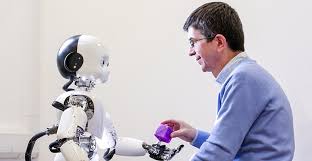
Artificial intelligence is advancing rapidly, and one of the most fascinating developments is robots learning to recognize and respond to human emotions. This technology promises to transform healthcare, customer service, education, and even social companionship.
1. Understanding Emotional AI
Robots equipped with emotional intelligence (EI) technologies can analyze facial expressions, voice tones, body language, and even physiological signals to interpret human feelings. Core components include:
- Facial recognition: Detects emotions like happiness, sadness, anger, or surprise
- Voice analysis: Measures tone, pitch, and speech patterns for emotional cues
- Behavioral observation: Tracks gestures, posture, and movement to understand mood
- Physiological sensors: Some advanced robots monitor heart rate or skin conductance to detect stress or excitement
By combining these data streams, robots can adapt their behavior to respond appropriately to human emotions.
2. Applications of Emotionally Intelligent Robots
- Healthcare: Robots provide emotional support to patients, monitor mental health, and assist in therapy.
- Education: AI tutors adjust teaching methods based on student frustration or engagement.
- Customer service: Emotion-sensing robots improve user experience by responding empathetically.
- Companionship: Social robots offer support for the elderly or isolated individuals.
These applications demonstrate how emotional AI can enhance human-robot interaction and improve outcomes across multiple sectors.
3. How Robots “Learn” Emotions
- Machine learning: AI systems are trained on vast datasets of human expressions, voice samples, and behaviors.
- Pattern recognition: Robots identify subtle correlations between human reactions and emotional states.
- Adaptive learning: Over time, robots refine their understanding by receiving feedback on their responses.
This combination of technology allows robots to move beyond pre-programmed responses and become more intuitive and context-aware.
4. Challenges and Considerations
- Ethical concerns: Emotional AI raises questions about privacy, manipulation, and consent.
- Accuracy limitations: Robots may misinterpret cultural or individual differences in emotional expression.
- Dependence risks: Overreliance on robots for emotional support may impact human-to-human connections.
- Bias in data: Training AI on limited or skewed datasets can lead to inaccurate emotional assessments.
5. The Future of Emotional AI
As technology improves, emotionally intelligent robots could become partners in daily life, helping with mental health, education, caregiving, and social interaction. Combining empathy with intelligence, these robots may eventually complement human emotional skills rather than replace them.
Final Thoughts
Robots learning human emotions is no longer science fiction—it’s a rapidly evolving reality. By interpreting and responding to feelings, AI has the potential to improve healthcare, education, and social well-being, while raising important ethical and societal questions.